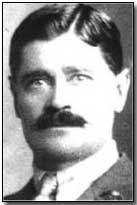Battles - The Battle of Scimitar Hill, 1915
 The Battle of Scimitar
Hill, which ran alongside the
Battle of Hill 60 on
21 August 1915, comprised a last-ditch effort by the Allied force under
Mediterranean Commander-in-Chief
Sir Ian Hamilton
to break north from
Anzac Cove
and north and east of
Suvla Bay, thus linking the 5km distance between the two sectors.
The Battle of Scimitar
Hill, which ran alongside the
Battle of Hill 60 on
21 August 1915, comprised a last-ditch effort by the Allied force under
Mediterranean Commander-in-Chief
Sir Ian Hamilton
to break north from
Anzac Cove
and north and east of
Suvla Bay, thus linking the 5km distance between the two sectors.
The attack on Scimitar Hill (by British commander Henry de Beauvoir de Lisle) was itself the final British offensive conducted on the Gallipoli Front prior to evacuation in December 1915/January 1916. It was conducted by 29th Division, despatched from Helles on the southern tip of the peninsular for the purpose on account of their status as tried and trusted veterans.
The plan required that hills to the east and north of Suvla Bay be attacked and captured as a subsidiary aim of the battle, but that the so-called 'W Hills' Turkish position and Scimitar Hill further south be placed into Allied hands as a priority. Success at the W Hills and at Scimitar Hill would successfully link Suvla Bay with Anzac Cove and breath fresh life into the Allied campaign on the peninsula.
The attack upon Hill 60 was designed to place into Allied hands the sole prominent hill feature lying between Anzac Cove and Suvla Bay. Consequently William Birdwood, the Anzac commander, appointed General Cox to oversee the capture of the hill (Kaiajik Aghyl to the Turks) along with 3,000 troops. In the event the attack proved a failure chiefly owing to reconnaissance failures and was abandoned by Birdwood on 28 August.
Meanwhile the attempt to capture the W Hills failed after, remarkably, the division sent to tackle it lost its bearings (and consequently their way). By contrast the attempt upon Scimitar Hill by 29th Division initially succeeded in dense fog (which rendered artillery support ineffective) but was ultimately repelled by Turkish fire from the hill's far slopes. The subsequent arrival of reserves sent by de Lisle (then temporary commander of Suvla) encountered heavy losses while charging uphill and was consequently thrown back.
Allied casualties in the Scimitar Hill action reached some 5,000, many of which were incurred after British artillery shrapnel resulted in surrounding bush catching fire. Turkish losses were put at 2,600.
Demoralised and with nothing to show once again in the face of mounting losses, Hamilton telegraphed war minister Lord Kitchener in London with a request for yet another batch of troop reinforcements, this time comprising 95,000 men. Kitchener offered 40,000 but already the government in London was considering evacuation options.
To view maps detailing the progress of the Gallipoli campaign click here; and here; and here; and here.
Photograph courtesy of Photos of the Great War website
A "dope can" was a metal syringe containing petrol for priming an aircraft engine.
- Did you know?
